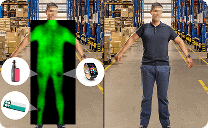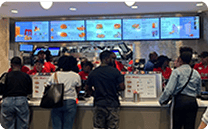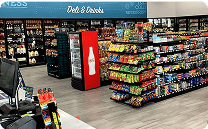Situational awareness is critical in security, safety, and operational management. It refers to a real-time understanding of your environment—what’s happening, why it’s happening, and what could happen next. This awareness enables individuals and teams to detect potential threats, prevent incidents, and respond effectively under pressure.
Situational awareness goes beyond personal observation in a business or industrial setting. It involves integrating multiple data streams—such as surveillance footage, access control logs, alarm systems, and even customer behavior analytics—to build a clear, accurate picture of current conditions. When this information is processed and interpreted effectively, decision-makers can identify patterns, anticipate problems, and respond with precision. This insight can identify the root causes of a problem and enable corrective action to be applied.
Situational Awareness in Security Environments
Situational awareness is the foundation of proactive protection in security and surveillance. Rather than reacting to incidents after they occur, teams with strong situational awareness can intervene early, when a suspicious person enters a retail premises, an employee bypasses a safety protocol, or when an individual’s behavior signals potential theft or fraud.
Key components of situational awareness in a monitored environment include:
- Perception: Gathering data from surveillance cameras, sensors, and systems.
- Comprehension: Understanding what that data means in the context of safety, risk, or compliance.
- Projection: Anticipating how the situation might unfold and taking appropriate steps.
This triad enables security personnel, managers, and operators to stay ahead of threats instead of being caught off guard.
Technology’s Role in Enhancing Situational Awareness
Modern surveillance systems leverage artificial intelligence, cloud connectivity, and real-time analytics to improve situational awareness dramatically. Smart cameras can detect motion, recognize faces, track vehicles, and alert staff to zone violations or suspicious activity. These systems become a powerful network of insights when integrated with access control, point-of-sale systems, or incident reporting platforms.
For multi-location businesses, cloud platforms can centralize data across all sites, giving operators a bird’s-eye view of activity, from customer behavior to compliance violations. Dashboards and alerts enable faster responses and more informed decisions, even from remote locations.
Situational awareness is also a cornerstone of operational efficiency. For example, a store manager with access to real-time traffic data and heat maps from video analytics can adjust staffing or detect inefficiencies in floor layout. In restaurants, managers can use surveillance data to identify bottlenecks in food prep or service lines. In distribution centers, operators can track movement patterns to optimize safety and workflow.
Human Factors and Training
While technology enhances situational awareness, it still relies on trained personnel to interpret and act on the information. Training programs incorporating visual scenarios, simulated incidents, and regular drills help develop the instincts and judgment needed to make fast, accurate decisions under pressure. Supported by the right surveillance tools, a well-informed human operator forms the backbone of any effective security strategy.
Empower Real-Time Awareness with DTiQ
Situational awareness starts with having the right data. DTiQ brings it all together with the 360iQ Platform. With cloud-connected video surveillance, real-time alerts, and AI-driven analytics, DTiQ gives your team the insight and tools they need to detect risks, respond faster, and improve performance across every location. Whether you’re focused on loss prevention, operational efficiency, or safety compliance, DTiQ turns raw surveillance data into meaningful, actionable information. Visit our website to learn more.





























